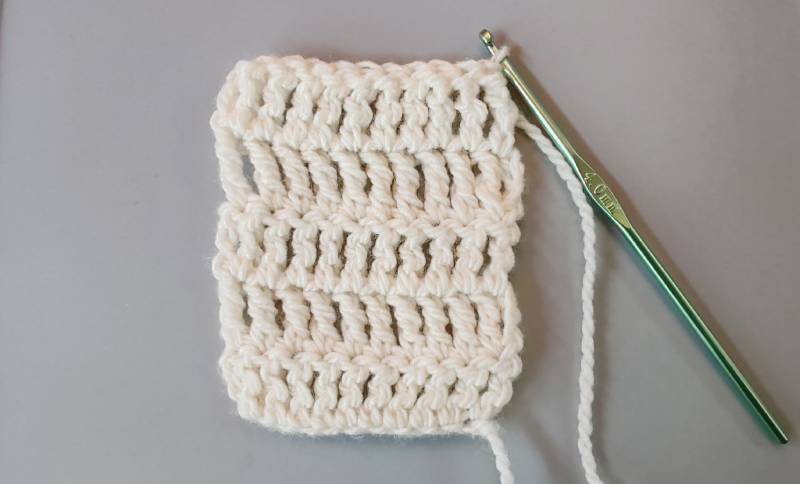
Treble Crochet Stitch – Complete Beginner’s Guide
Discover how to master the treble crochet stitch with this detailed guide, perfect for beginners. The treble crochet stitch, also known as triple crochet, is a taller and more open stitch than single, half double, or double crochet. It creates a beautiful, airy fabric, making it ideal for lightweight garments, lace projects, and textured designs. This guide will walk you through everything you need to know—from materials to step-by-step instructions, common uses, tips, variations, and troubleshooting.
Understanding the Treble Crochet Stitch
The treble crochet stitch is one of the tallest basic crochet stitches. Its height allows it to cover more ground quickly, making your projects work up faster. Due to the stitch’s openness, it creates a lacy and drapey fabric that is light and breathable. This makes it perfect for warm-weather accessories and decorative pieces. Unlike shorter stitches like single crochet, treble crochet requires more control with tension to avoid large holes or uneven stitches.
Common Mistakes to Avoid When Learning Treble Crochet
- Missing or miscounting chains in the foundation row.
- Wrapping yarn too loosely or too tightly, causing uneven stitches.
- Forgetting to yarn over twice before inserting the hook.
- Not maintaining consistent tension throughout.
Practical Tips for Beginners
- Use stitch markers to mark the beginning and end of rows.
- Practice with medium-weight yarn before moving to thinner or specialty yarns.
- Take breaks if your hands get tired to maintain even tension.
- Watch video tutorials to see the stitch in action and complement written instructions.
Where to Use Treble Crochet Stitch
The treble crochet stitch is ideal for projects that benefit from an open, airy fabric with good drape. Common uses include:
- Lightweight shawls and wraps
- Summer tops and cardigans
- Lace blankets and throws
- Decorative table runners and doilies
- Mesh-style market bags
- Scarves with a delicate texture
How to Combine Treble Crochet with Other Stitches
Combining treble crochet with other stitches can add texture and variety to your projects. Popular combinations include:
- Shell stitches: Using groups of treble crochet stitches to form fan or shell patterns.
- Clusters and puff stitches: Adding dimension by grouping stitches.
- Filet crochet: Creating open lace patterns with treble crochet and chain spaces.
- Alternating rows of treble crochet and double crochet for varying texture.
Advantages of Treble Crochet Stitch
- Covers more area quickly, making projects faster to complete.
- Creates a lovely, lacy, lightweight fabric ideal for warm-weather garments.
- Adds height and texture when combined with other stitches.
- Suitable for both functional and decorative crochet items.
Challenges of Treble Crochet Stitch
- Requires more control over tension to avoid large holes or uneven stitches.
- Less dense fabric, so not suitable for stuffed or structured items like amigurumi.
- It can be trickier for beginners due to the extra yarn over and taller stitch height.
Advanced Treble Crochet Techniques and Variations
Once comfortable with the basic treble crochet, you can explore:
- Treble crochet clusters: Groups of treble stitches worked together to form textured patterns.
- Treble crochet shells: Multiple treble stitches worked into a single stitch to create fan shapes.
- Treble crochet in the back loop only: Creates ribbing or textured fabric.
- Extended treble crochet: Lengthening the stitch for unique textures.
- Treble crochet with color changes: Incorporating different yarn colors for striking patterns.
How to Incorporate Treble Crochet into Your Crochet Projects
Choosing the right stitch for your project is essential. Treble crochet’s tall, open structure is perfect for:
- Projects that need fast coverage with an airy look.
- Items where drape and flow are important, such as shawls or summer tops.
- Adding decorative borders or accents to other crochet works.
- Creating lace panels within garments or home décor items.
Troubleshooting Common Treble Crochet Problems
Problem: Large holes or gaps in fabric
Solution: Adjust tension to be slightly tighter; consider using a smaller hook.
Problem: Uneven stitches or rows that look sloppy
Solution: Practice maintaining even tension; use stitch markers to track row ends.
Problem: Difficulty completing the yarn overs and loops
Solution: Slow down and carefully follow each yarn over; practice to build muscle memory.
Problem: Stitch count inconsistencies
Solution: Count stitches at the end of each row; use markers to keep track.
Caring for Treble Crochet Projects
Because treble crochet creates an open and delicate fabric, it’s important to:
- Follow yarn care instructions carefully to maintain softness and shape.
- Consider gentle hand washing to avoid stretching or damaging fibers.
- Block finished projects to enhance shape and drape.
- Store items flat or loosely folded to prevent distortion.
Conclusion
Mastering the treble crochet stitch opens a new world of possibilities in your crochet projects. From airy shawls to delicate lace designs, this versatile stitch is a must-learn for anyone looking to expand their skills. With practice, you will gain control over tension and create beautiful, light, and textured pieces.
Remember to start with simple practice swatches, use the right materials, and be patient as you develop muscle memory. Soon, you’ll be creating stunning projects that showcase the elegant openness and height of the treble crochet stitch.
